In the previous data report, we compared the novel coronavirus with SARS. But looking at the scale of the new virus and at how fast the number of confirmed cases has grown, the 2019-nCoV looks very different from the 2003 strain. For this reason, in this report, the novel coronavirus will be solely under focus.
The growth of new confirmed cases seems to be massive, in thousands every day, to be exact. But at the same time, the growth rate is actually slowing down from its peak of around 65 percent to less than 30.
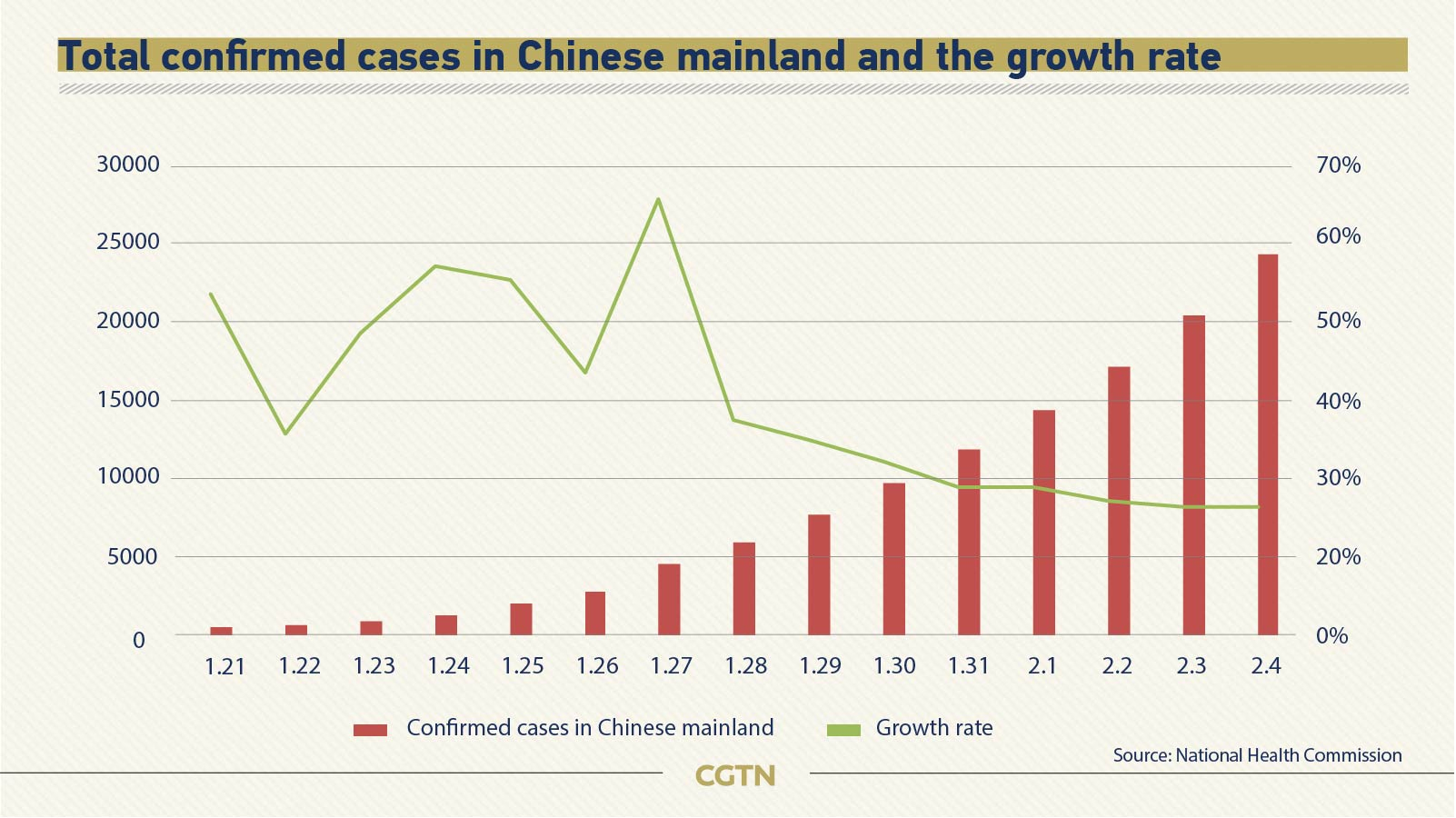
Graph by Pan Zhaoyi and Jia Jieqiong
Graph by Pan Zhaoyi and Jia Jieqiong
Online voices have claimed that data on confirmed cases is "useless" because of a shortage of test kits, which makes sense because each case can only be confirmed by test kit results.
But when focusing on data related to suspected cases – people in close contact with confirmed patients, or showing symptoms of pneumonia, which may or may not be caused by novel coronavirus - this has nothing to do with test kits and can work as an indicator for the spread of coronavirus.
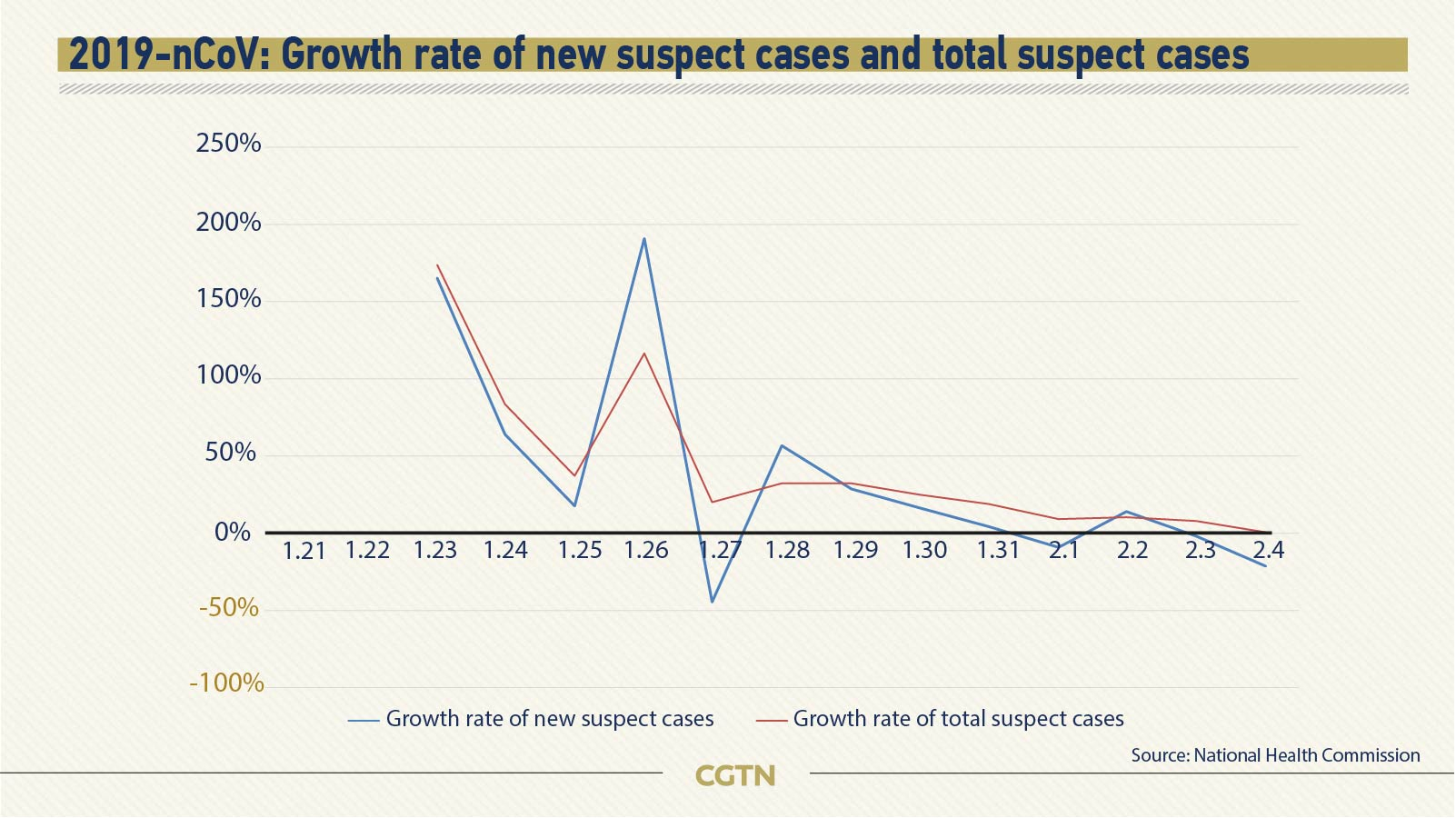
Graph by Pan Zhaoyi and Jia Jieqiong
Graph by Pan Zhaoyi and Jia Jieqiong
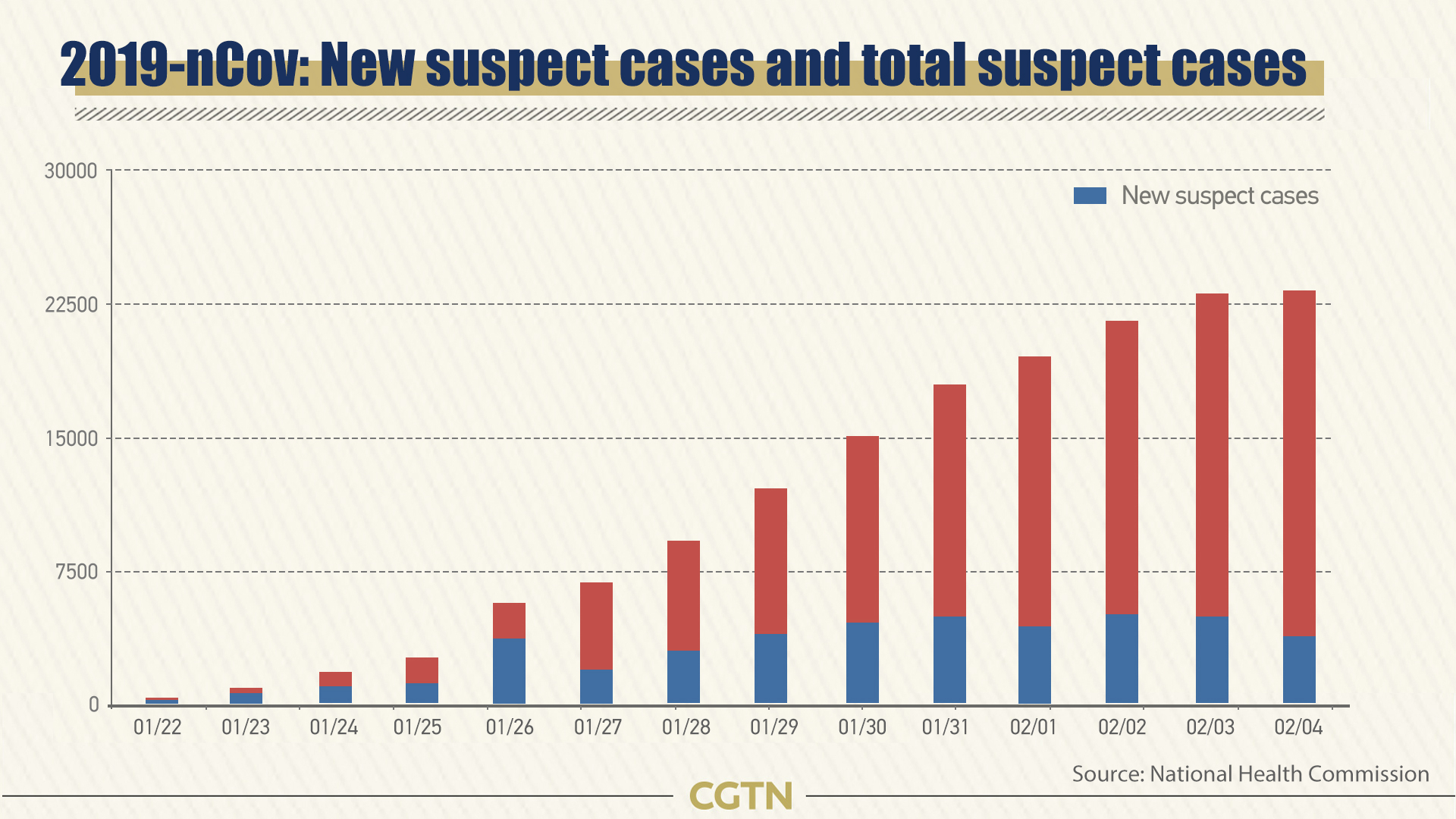
Graph by Pan Zhaoyi and Jia Jieqiong
Graph by Pan Zhaoyi and Jia Jieqiong
The graphic shows that the growth of suspected cases also follows the same pattern of confirmed cases – even dip under zero sometimes. This could be a positive sign of the outbreak being taken under control.
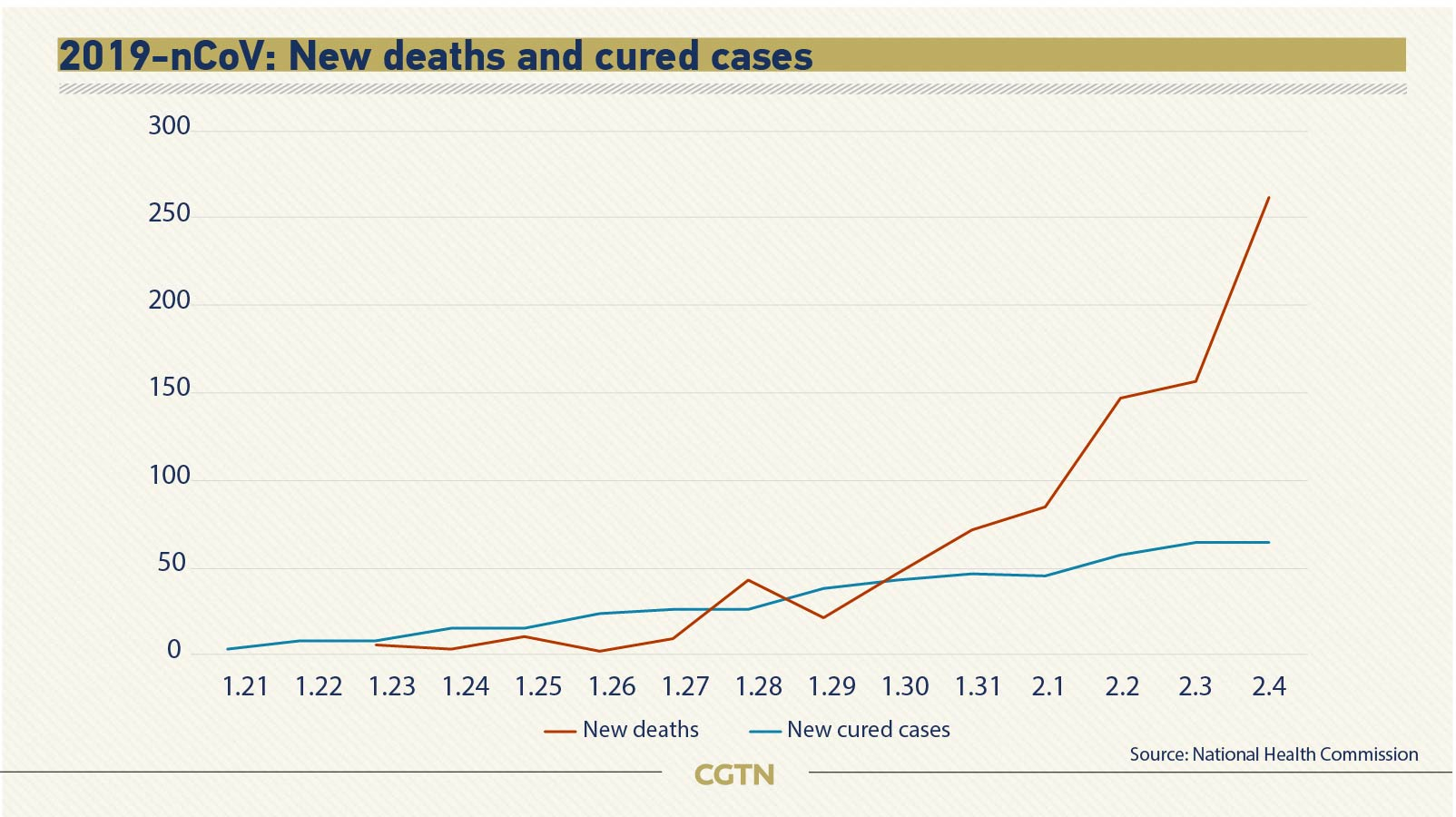
Graph by Pan Zhaoyi and Jia Jieqiong
Graph by Pan Zhaoyi and Jia Jieqiong
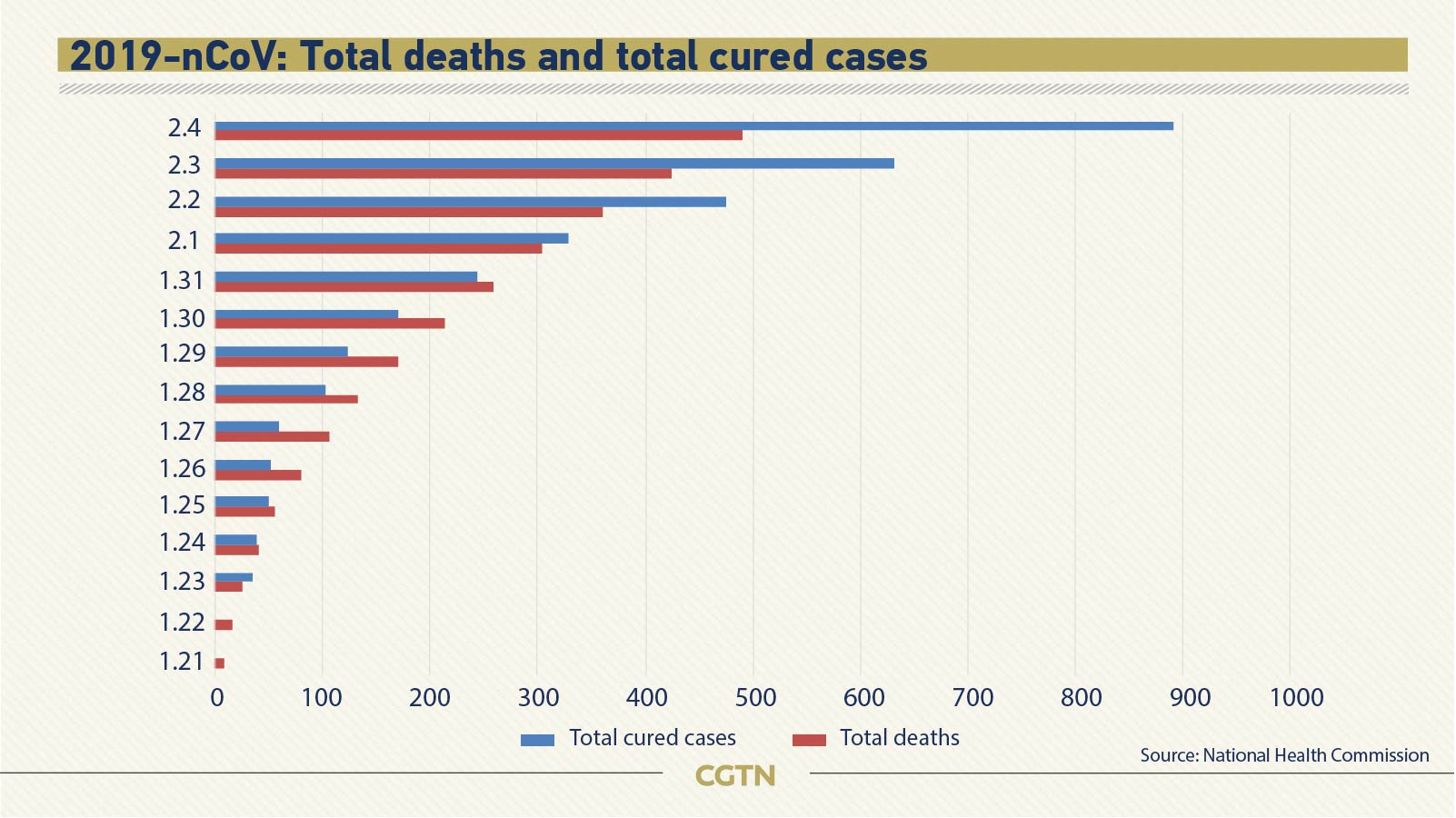
Graph by Pan Zhaoyi and Jia Jieqiong
Graph by Pan Zhaoyi and Jia Jieqiong
Speaking of the death toll, the number of deaths has been increasing but, at the same time, its speed is slower than the recovered cases, meaning the number of recoveries outnumbered the deaths since the start of February.
What's more, the growth of recovered cases is on the rise. As we predicted on January 30, many more cases would recover despite the seemingly slow treatment process, because it can take weeks for a patient to recover.
One week later, the data clearly shows our prediction has, fortunately, matched with the reality.
But it's way too early to relax because there are still tens of thousands of Hubei people sitting in beds waiting for treatment or virus tests.
As the epicenter of the outbreak, people in Hubei Province are the main victims.
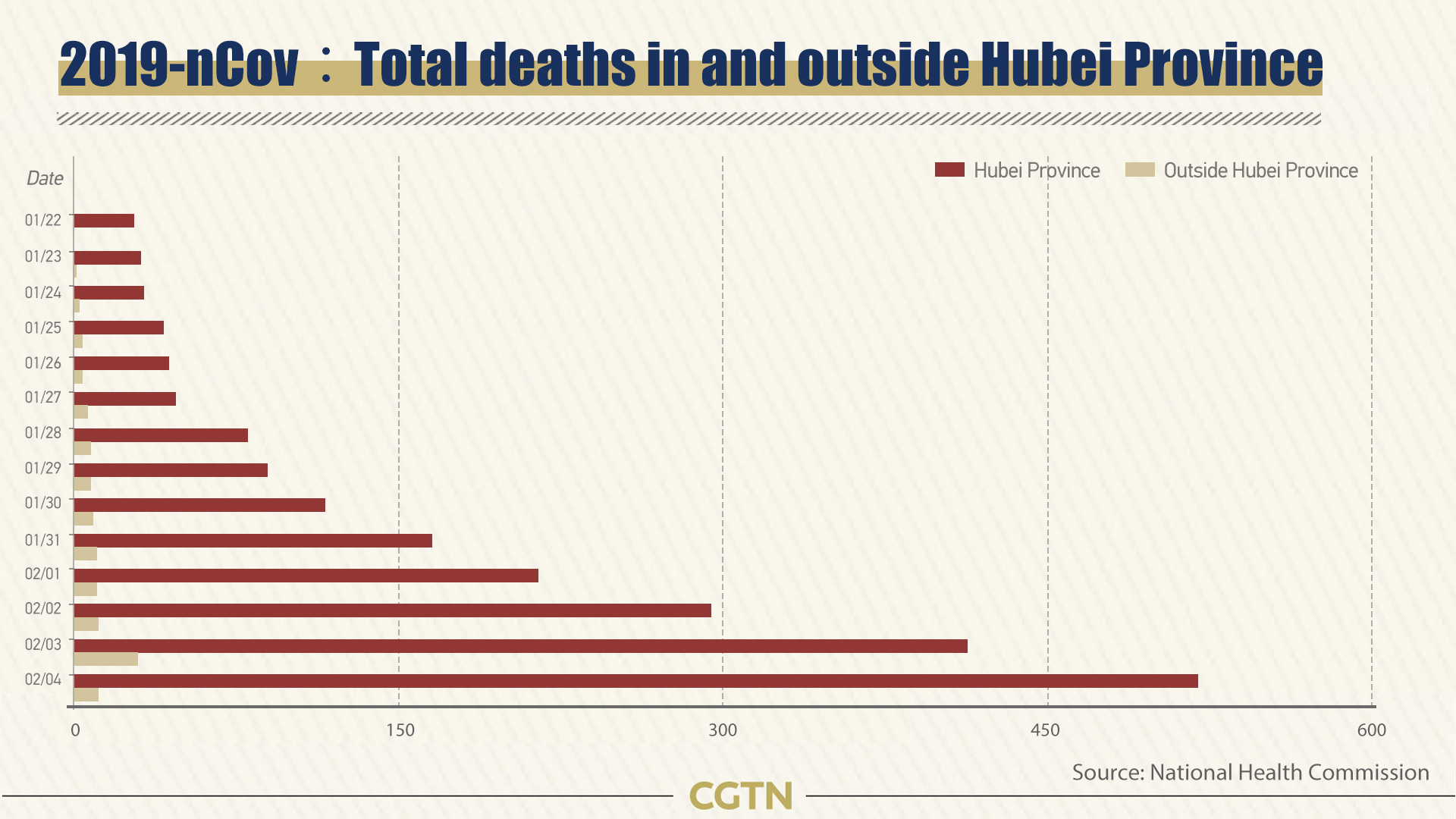
Graph by Pan Zhaoyi and Jia Jieqiong
Graph by Pan Zhaoyi and Jia Jieqiong
Official data like the one compiled above shows that the majority of people who lost their lives to this virus are from that province. The lockdown imposed in the city of Wuhan and travel restrictions adopted in other cities in the province helped prevent the spread of the virus to other areas, but at the same time put the local population in an extremely difficult and complex situation.
Trapped in their cities, more susceptible to being infected, and with a public health system under stress to control the contamination and treat the infected, citizens in Hubei face severe times. But the lockdown decision is the ultimate sacrifice from the region in an effort to save the rest of the country and the world from the same tragic outcome it sees growing each day.
Read more about the outbreak on our feature page.
(Pan Zhaoyi also contributed to the story.)